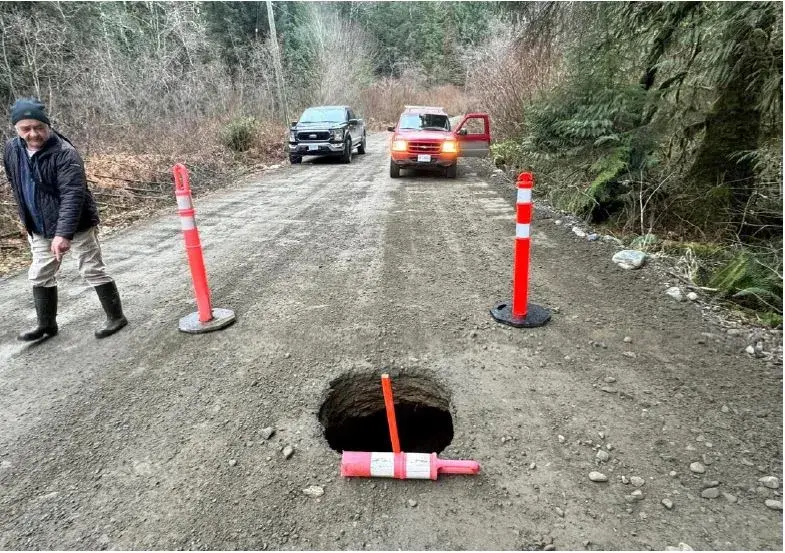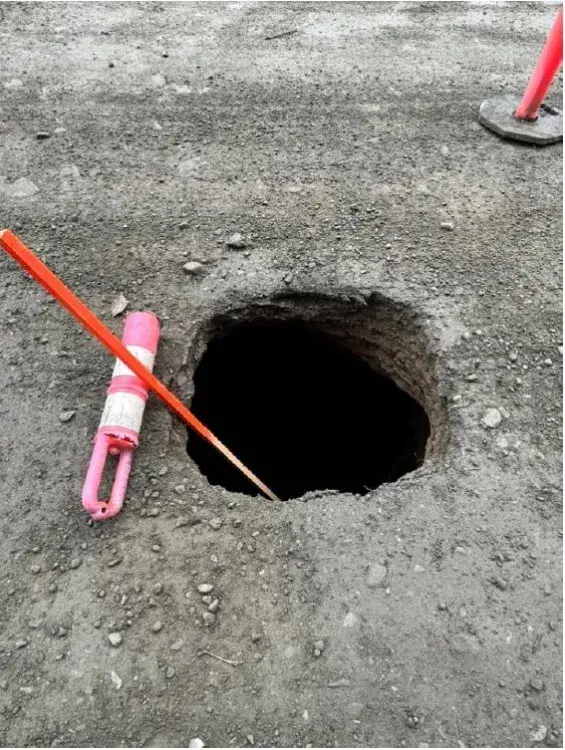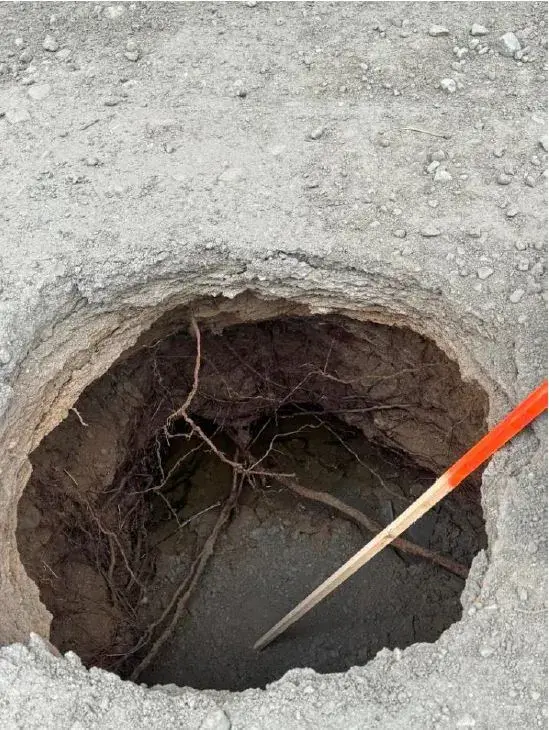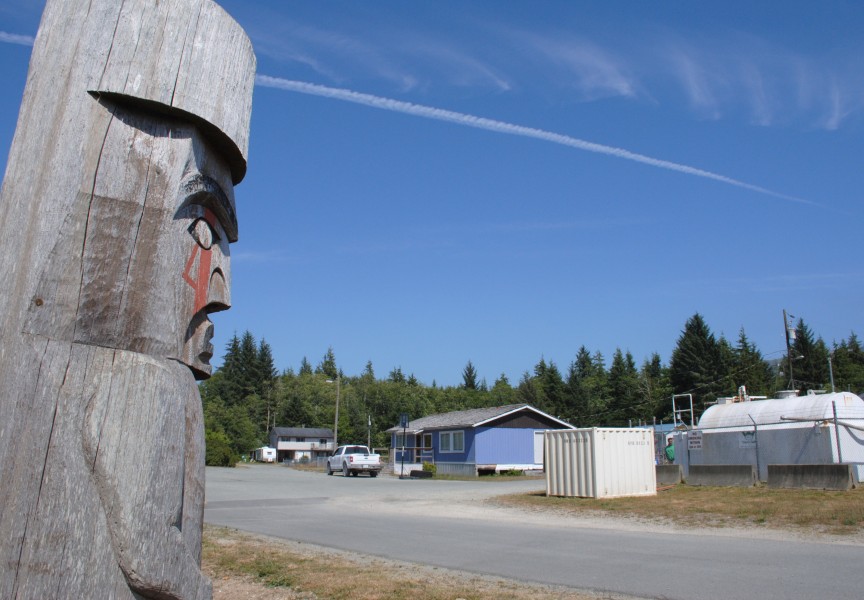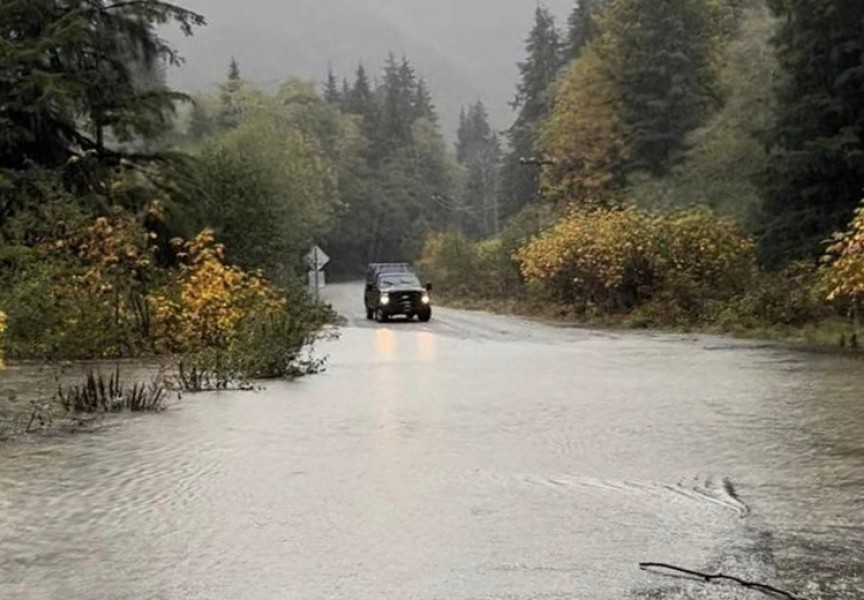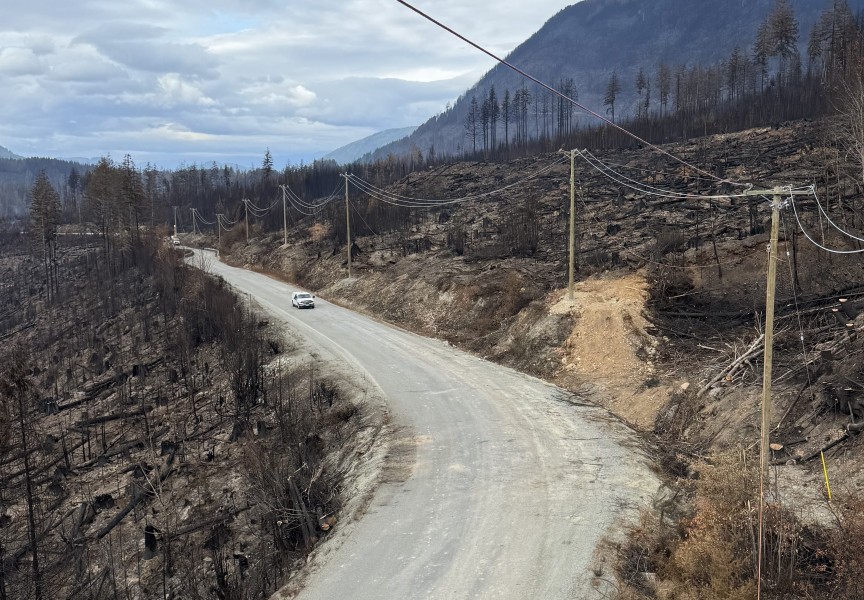A hole large enough for a person to fall into was found on the road near Nitinaht on Saturday, a hazard that highlights the need for better alternative access to communities on western Vancouver Island.
Although the logging road leading to the Ditidaht First Nation’s community by Nitinaht Lake is in a remote location, last summer thousands of vehicles relied on the route each day while Highway 4 was closed during the Cameron Bluffs forest fire. After the wildfire over Cameron Lake shut down the highway in early June, the province designated a detour by Lake Cowichan and Nitinaht, leading north up to Port Alberni to enable essential supplies for the Island’s west coast communities. For weeks convoys of trucks used the series of logging roads.
For Nitinaht residents it’s a critical road into their community, relied upon by emergency responders. On Feb. 10 this access was completely blocked, when locals discovered a hole measuring approximately three feet wide and four feet deep.
“Saturday morning community members came across it, luckily it was daylight, and put marking signs up,” said Ditidaht Chief Councillor Judi Thomas. “It was an old wooden culvert that had collapsed, and un-stabilized the road right across.”
Thomas noted that the First Nation had recently hired Mike Swityk as its director of infrastructure, who has road building experience. Within four hours the road was excavated and a temporary culvert was installed.
“He got specifications and approvals from Chatwin Engineering to make sure that was the right size culvert to sustain our needs temporarily,” said Thomas. “It was an excellent team effort, led by Mike Swityk, our new director.”
On Monday morning (Feb. 12) markers remained notifying motorists of the hazardous part of the road.
“It’s stable on the single-lane traffic side,” said Thomas. “Steps are being taken this morning for a permanent fix.”
But this raises the likelihood that other sections of the road to Nitinaht could collapse in the future, which is something that the First Nation intends to investigate. The road that collapsed is under the management of a forestry company.
“They usually maintain the road when they’re actively logging,” said Thomas. “However, when they’re not actively logging, the road does not get maintained.”
“Access to Nitinaht Lake and Nitinaht village is predominantly via permit roads that are held by timber forest licensees, who are responsible for maintaining the access route,” wrote the ministry of Forests in an email to Ha-Shilth-Sa, adding that to ensure safety it followed up with the licence holder. “We understand that they are currently working with the community, and the community has patched the road to allow access in and out of the village. Further assessment will be done by the licensee to determine next steps.”
For years the First Nation has been lobbying for improvements to the road. A portion of the passage is susceptible to flooding from Nitinaht River, and during the migration of chum salmon in November fish have been seen swimming across the road during past years. In early 2023 a 2.8-kilometre bypass was completed, with a $1.7 million investment from the Ditidaht First Nation, plus assistance from the San Group. This bypass is north of the section where the sinkhole was recently discovered.
If travelling from Port Alberni, half of the route to Nitinaht is over Bamfield Main, which has undergone a major upgrade in recent years. Last October marked the completion of the chip sealing, an alternative to paving which uses an asphalt emulsion. Initially budgeted for $30.7 million, the province pledged $25.7 million for the project, with the remainder covered by the Huu-ay-aht First Nations. Costs escalated over the three years of road work, tasking the Huu-ay-aht to find more funds last year to finish the safety upgrade. The provincial government put in another $10 million, and with an undisclosed amount of additional investment the Huu-ay-aht celebrated the upgraded road last fall.
Now it’s time to complete the job, bringing a safer route to Nitinaht, said Thomas. The need to bring it up to provincial standards became apparent last summer during the sudden reliance on the logging road during the Cameron Bluffs wildfire.
“I am going to be sitting with the minister of transport soon and advocating, of course, for paved roads. It needs to happen, long overdue,” said Thomas. “Now we just need to finish that route from Franklin River out to Nitinaht and then back around to Lake Cowichan. I think with a team effort we can make this happen.”

